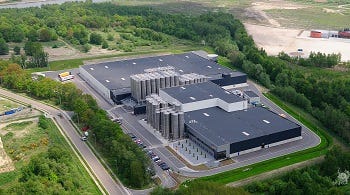Long glass fiber PP capacity coming on stream in Belgium
SABIC Innovative Plastics is significantly boosting capacity for its Stamax long glass fiber-filled polypropylene (LGFPP) composite resins at its manufacturing facility in Genk, Belgium, to meet rapidly growing demand from automotive customers.
July 25, 2012
SABIC Innovative Plastics is significantly boosting capacity for its Stamax long glass fiber-filled polypropylene (LGFPP) composite resins at its manufacturing facility in Genk, Belgium, to meet rapidly growing demand from automotive customers.
In June, the company began work on a new production line that is slated to open in the second half of 2013. Stamax LGFPP composite resins reportedly give customers a robust combination of properties, while enabling exceptional light weight to provide the potential to improve fuel efficiency and cut emissions. This lighter weight allows for a significantly enhanced carbon and energy footprint over the life of a car or truck compared with traditional materials.
"When we constructed the Genk facility, we proactively built in scalability in anticipation of customers' future needs," says Leon Jacobs, Innovative Plastics' Automotive leader in Europe. "It took only two years before we needed to scale up with this new, state-of-the-art production line because our Stamax composite resins have become a material of choice for a growing number of automotive applications. Stamax composite resins give customers outstanding value, especially by assisting in meeting toughening automotive design requirements, reducing overall system costs and increasing sustainability."
|
New LGFPP capacity to serve burgeoning auto sector. |
Stamax composite resins are also available to customers from SABIC's Bay St. Louis, Mississippi site in the Americas, which opened in 2011. Bay St. Louis was modeled on the design and technology of the Genk plant, the largest greenfield PP compounding plant ever built in Europe. Genk also houses a Compounding Innovation Center.
The properties and performance of Stamax composite resins make a significant contribution to reduced environmental impact, especially compared to the use of other materials. For example, Stamax composite resins deliver similar stiffness performance to polyamide-steel hybrid (PA hybrid) systems, yet eliminate steel beam reinforcement.
According to SABIC's Sustainable Product Scorecard, verified by GreenOrder, a leading sustainability consulting firm, an automotive front-end module made from Stamax composite resin can result in up to 44%lower energy footprint compared to a PA hybrid alternative from material sourcing through the end of product life, mostly as a result of the weight savings during vehicle use. Making 200,000 front-end modules with Stamax resin versus a PA hybrid solution could save enough energy to power 14,900 homes in Europe for one year.
SABIC's Stamax LGFPP composite resins are said to offer several advantages over other materials in automotive applications. Compared to steel, SABIC composite resins are light in weight, do not corrode and facilitate parts integration that can streamline the vehicle assembly process. This high-performance SABIC material also provides excellent strength and dimensional stability, high flow for thin-wall structural components and exceptional design freedom. In addition, Stamax composite resins are said to provide high heat deflection temperatures, high stiffness, low thermal expansion and low creep.
These properties are leading to diversification in the applications for Stamax composite resins. The material—widely used in automotive front-end modules, door modules and seating structures—is now used on tailgate structures and is also making inroads in underhood applications where heat is non-critical. —[email protected]
About the Author(s)
You May Also Like



